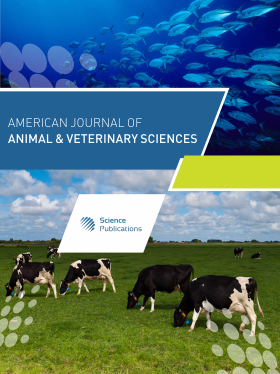Effect of Protein Feed Additives on Skin and Fur Quality of American Mink
- 1 Moscow State Academy of Veterinary Medicine and Biotechnology Named after K. I. Scriabin, Russia
- 2 Severtsov Institute of Ecology and Evolution, Russian Academy of Sciences, Russia
- 3 Research and Production Center for Livestock and Veterinary Medicine LLP, Kazakhstan
Abstract
The purpose of the research is to study the effect of hydrolysates on the skin and fur quality. To assess morphological parameters of skin, as well as the commercial characteristics of the raw materials obtained, we formed three groups (one control and two experimental) of 3-month-old males (25 animals in each group) and females (50 animals in each group). Control group minks received the main conditioning diet. For four months, the minks from Experimental Group I received 2 mL/day of hydrolysate in addition to the main diet and the minks from Experimental Group II received 4 mL/day of the additive, right up to the moment of the scheduled on-farm euthanasia (after 7 months). All the experimental animals received protein hydrolysate in addition to the main diet according to the feeding standards adopted on the farm and in accordance with the feeding recommendations, taking into account the amino acid composition of the diet. It was established that the use of the protein feed additive-hydrolysate (an effective dose is 4 mL/day) has a positive effect on the commercial characteristics of mink pelts. Hydrolysate increases pelt size and area, skin thickness due to its papillary layer, increases fur length, density and strength; enlarges bundles of more numerous underfur hairs and makes hairs longer but not coarse. The impact of the feed additive on the skin glandular apparatus, as well as on the epidermis thickness has not been proven. The performed tests demonstrated that all the size and quality characteristics of air-dried pelts from the experimental animals are better than those from the control ones. The largest average pelt area was observed in Experimental Group I and the highest percentage of extra-large pelts was observed in Experimental Group II. It was found that Group II had the highest percentage of both extra-large and defect-free pelts, although, in practice (without feed additives) these two indicators are inversely related. Processing and analysis of the data allowed us to evaluate the combined indicator of pelt quality-in males from Experimental Groups I and II the quality score significantly exceeds that one in the control group by 11 and 26%, respectively; and in females - by 22 and 24%, respectively.
DOI: https://doi.org/10.3844/ajavsp.2022.19.25

- 4,853 Views
- 3,495 Downloads
- 1 Citations
Download
Keywords
- American Mink
- Feed Additive
- Hydrolysate
- Skin and Fur
- Histology
- SEM
